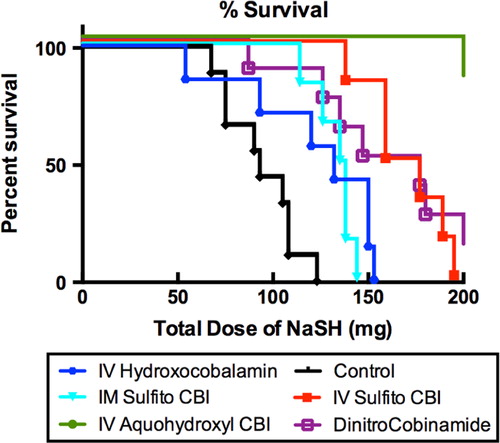We thank the authors for their letter and the important points that they raised. We agree that there are likely differences between intravenous NaHS infusion and inhaled hydrogen sulfide. In the initial earliest phase following initiation of NaHS infusion, the drop in tissue oxyhemoglobin appears to be attributable to vasodilation and drop in blood pressure (possibly accompanied by decreased cardiac output, although it was not directly monitored). The rise in oxyhemoglobin was seen subsequently as inhibition of Cytochrome c oxidase progressed. Thus, the interaction of physiology with molecular biology results in complex responses.
While the degree of pulmonary edema effects of intravenous NaHS appeared to be substantially less than that described in inhalation models, pulmonary edema was seen in these animals as a late clinical event as described.
The authors state that “individuals exposed to hydrogen sulfide are typically removed from the source of exposure as the initial step in treatment of this toxicity, and therefore the clinical relevance of the continued infusion model is unclear.” Unfortunately, many of the victims exposed to hydrogen sulfide cannot be removed from the environment in a timely manner, and under such circumstances, the continued exposure model may be clinically relevant.
The authors are correct in pointing out the error in the curve in Figure 3; the survival curve figure has been corrected to show survival of IM dinitrocobinamide similar to that of IV sulfitocobinamide as the data in the table demonstrated.

We agree that no model can fully reproduce the clinical condition, and exposure scenarios vary widely. As writers of the letter point out, it is most important to understand and acknowledge the limitations of a given animal model and, as they suggest, to develop a spectrum of approaches to address shortcomings of each individual model.
Sincerely,
Matt Brenner, MD
UC Irvine, Irvine, CA, USA
